Two statistics lay bare the astonishing impact Covid-19 has had on Formula 1.
First, since the pathogen intensified its spread across world in March almost half this season’s scheduled 22 races have been cancelled or (optimistically, in the view of some) postponed. Second, the obligatory annual team shutdown – usually a three-week break in summer – has now been in place for three times as long.Although speculative calendars are increasingly doing the rounds, these count for nought as long as authorities restrict the movement of people across the world. What use is a calendar which schedules races in countries which refuse to admit foreigners or make concessions for sport activities?
The pandemic’s effect on the 10 teams has been disastrous. Most have furloughed staff, some are expected to be ‘retrenched’, ‘de-hired’ or similar, while a number of independent teams have availed themselves of advances on future F1 revenues from commercial rights holder Liberty Media. Major cost and expense cuts are coming across the board. Whether the all teams make it through the season is questionable.
It seems likely that the 60% majority required to reduce the annual budget cap from $175m (with exemptions) to $145m in 2021 (and less over subsequent seasons) will be delivered over the coming week via a team vote. This is significant: Due to the impact of Covid-19, the FIA pushed through amendments to the International Sporting Code eliminating the need for unanimity for major rule changes at short notice.
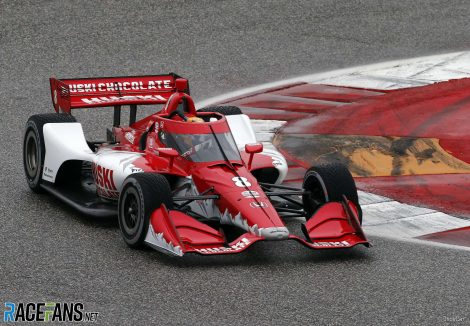
Also significant is that Ferrari is investigating an IndyCar entry as an alternative to mass layoffs. Red Bull must surely be considering the transfer of human resources to sister team AlphaTauri where feasible. Intriguingly, the word on the F1 video-conference beat is that Renault is hiring engineers, pointing to a continuation of its F1 programme despite the impending loss of star driver Daniel Ricciardo, with no word yet on his replacement.
There is also increasing talk that Fernando Alonso will replace the Australian, returning to the team with which he won his 2005 and 2006 titles, making it his third stint with the French-owned outfit.
Certainly, the recent appointment of Pat Fry as technical director – a heavy-weight appointment that has largely stayed under the radar – shows serious intent, while the driver and engineer worked together at Ferrari and McLaren.
Advert | Become a RaceFans supporter and
Still, nothing can be taken for granted: Where F1’s current commercial agreements demand full-on commitment from teams for the duration of the covenants, drafts of the incoming Concorde Agreement permit teams to leave on an annual basis.
Given that most contracts run for a maximum of three years and that retrenchment packages are usually linked to length of service, recent recruits would be entitled to minimal severance packages by end-2021, assuming Renault leaves after the current formula. The company’s replacement for Carlos Ghosn, Luca de Meo, slides his feet under the CEO desk in July, so let’s see which way the wind blows then.During F1’s last crisis, the 2008/9 global meltdown, a number of brands – including motor manufacturers – used the crisis as excuse to exit F1 after the sport had failed to fulfil their objectives for whatever reason, albeit usually self-inflicted. Only executives with career death wishes publicly admit to errors of judgement in splashing out millions on programmes that bombed, and thus to them the crisis was blessing in disguise.
During the aftermath of the then-withdrawals of a number of motor brands, I had lunch with an (ex) executive of one of those affected, who privately admitted his team had left due to poor results and governance concerns, yet publicly the company blamed the economy.
“How could we say ‘We’re leaving because F1 didn’t work for us or we had issues with [name withheld]’?” he asked rhetorically. “It was more convenient to blame the economy than our own shortfalls or political battles, plus many shareholders loved us for pulling the plug on an activity that divides opinion.”
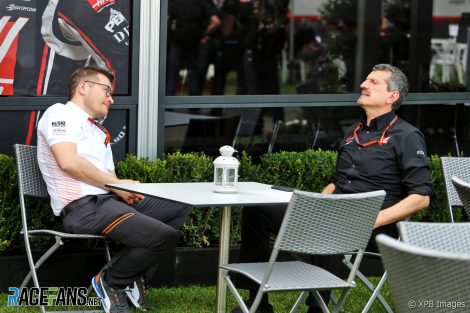
Forget not that both walked away from F1 in 2008-09, only to later return in different guises. Could it be that history repeats itself?
It is not only the teams that have been and will continue to be hit during the aftermath of the pandemic, for virtually all walks of life have been affected, and that obviously includes F1. No element of the sport has been left untouched, and that situation will continue for many years. Some changes are likely to be irreversible through circumstance, while others will be adopted voluntarily.
An example of the latter relates to travel: Where before March this year all teams bosses plus numerous F1 personnel and FIA officials regularly traipsed to London, Geneva or Paris for meetings of the Strategy Group, F1 Commission or World Motor Sport Council, since March they have met via videoconferences more regularly and taken more decisions of greater gravity than during any similar period in recent history.
Advert | Become a RaceFans supporter and
This trend can be expected to accelerate, and it will be a matter of time before it is applied to races, too: why fly hundreds of race engineers and support staff to grands prix if videoconferencing does the trick? Are 60 heads really necessary to operate two race cars for seven hours per weekend in places as far flung as Melbourne and Montreal? Surely a number could operate from base via increased use of virtual garages?
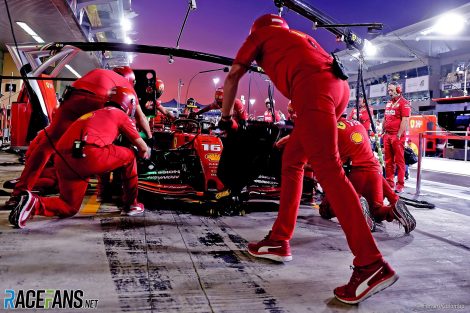
When a 20-strong headcount marks the starting point for pit stops, it is easy to find functions to fill their weekends. When it is half that, teams will be forced to combine a number of activities, applying time and motion studies to improve efficiency team efficiency. Of course, no industry enjoys lay-offs, but when the alternative is an ailing sport there is no other option, for a defunct activity has a zero payroll.
Consider F1 hospitality units: Are such palatial structures really required? At 12 of the season’s 22 races the promoters provide team quarters and there are no complaints. Yet hundreds of thousands of kilometres are logged up by an average of 20 trucks per team – 200 total – lugging such fortresses across Europe. A team member recently put the average annual cost of operating such units at $8-10m, or $80-100 collectively.
The units have their root in tobacco sponsorship of old, when fag brands had the resources to out-glitz each other, a trait that continued under the car brands after legislation outlawed cigarette liveries. Would Mercedes exit F1 were hospitality units banned? The Three-Pointed Star could, of course, leave – and finger the ban – but it is unlikely to be the sole reason given that such hospitality exists only at European races.
Would Philip Morris withdraw tens of millions from Ferrari on the basis of losing its red tower? The Mission Winnow folk always seem fairly content in temporary structures in Suzuka and Singapore, so why not in Silverstone or Spa? The same applies to any sponsor or partner one cares to list – and F1 could find itself attracting additional sponsors once its juvenile games of ‘mine-is-larger-than-yours’ cease. (See below)
Covid-19 has impacted heavily on a variety of sponsors operating across a broad spectrum of industries, with oil brands amongst the hardest hit. A check on the share prices of Petronas (Mercedes), Shell (Ferrari), ExxonMobil (Red Bull) and BP (Renault) shows that an average of 30% has been wiped off their respective market capitalisation in three months – directly attributable to the continuing effects of Covid-19.
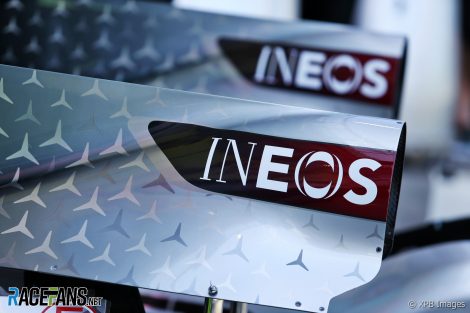
Many expected the company and its billionaire Jim Ratcliffe to ramp up its involvement further in due course – possibly by way of a buy-in given that ownership of the late Niki Lauda’s 10% shareholding is currently under discussion.
However, the pandemic has massively affected Ratcliffe’s wealth, with the latest Sunday Times Rich List dropping him from richest Briton to fifth after estimating that his personal worth dropped almost £3bn to £15bn over the past 12 months, an almost 20% drop.
Yes, £15bn is still enough to buy all ten teams and Liberty Media outright. But Ratcliffe faced considerable criticism after requesting £500m in state loans and aid for Petroineos, a jointly-owned company with PetroChina. The placing of staff employed in Ratcliffe’s hospitality operations on (state-subsidised) furlough has further ratcheted up that pressure.
The flaunting of wealth on the airbox and rear wing of a silver Mercedes does not sit well against that background. Mercedes F1 CEO Toto Wolff’s admission to Austrian broadcaster ORF that he is in discussion with Mercedes about whether to extend his contract beyond the end of this year and, intriguingly, on what terms given that he also a shareholder in the team poses questions regarding the futures of both brands in F1.
By their nature contracts are bilateral (at least), and surely Mercedes CEO Ola Källenius and the main board hold most of the cards, for it is they and not Wolff who will decide the company’s F1 future. Let us see whether they reach for the ready-made excuses detailed above, or extend a continuous involvement in F1 which began in the mid-nineties.
Sole F1 tyre supplier and Liberty corporate sponsor Pirelli has seen its market value plummet, having shed 40% this year. Aston Martin’s has tanked by 60% during the same period. Brake supplier Brembo has also taken a sizeable knock, so all three companies will be watching their F1 spend diligently. One wonders whether Pirelli’s decision to restrict tyre compounds is driven as much by economics as practicality.
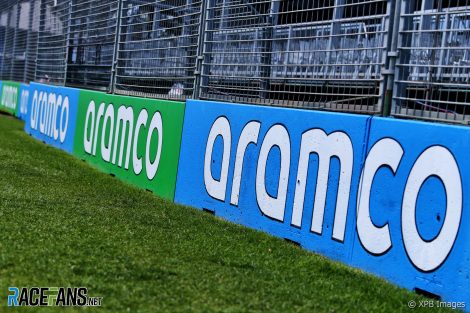
Heineken’s contract expires this year – its two sponsor leads recently left the company, one joining F1 as head of marketing – and with restrictions on mass events and increasing drink-drive pressures, the brand may well choose to exit. Emirates has haemorrhaged cash during the crisis and may needs to regroup, thus triggering whatever exit clauses exist in a contract that is scheduled to expire at the end of 2022.
However, F1’s downsizing is likely to make it more attractive to sponsors who would normally jib at $30m title sponsor packages, whether on grounds of value, affordability or principle. Some sponsors may value F1’s high-profile contribution to the fight against Covid; others its determination to introduce bio- and synthetic fuels sooner rather than later – increasingly crucial elements in the global fight against air pollution.
Ultimately it seems inevitable that sponsors and brands will walk away from F1 over the next two years, but by the same token the sport and its masters have put in place the sort of cost-saving measures that will attract a broader base, albeit one that is likely to have less economic depth. One thing is, though, certain: F1’s commercial ‘face’ will change markedly in the short to medium term.
RacingLines
- The year of sprints, ‘the show’ – and rising stock: A political review of the 2021 F1 season
- The problems of perception the FIA must address after the Abu Dhabi row
- Why the budget cap could be F1’s next battleground between Mercedes and Red Bull
- Todt defied expectations as president – now he plans to “disappear” from FIA
- Sir Frank Williams: A personal appreciation of a true racer




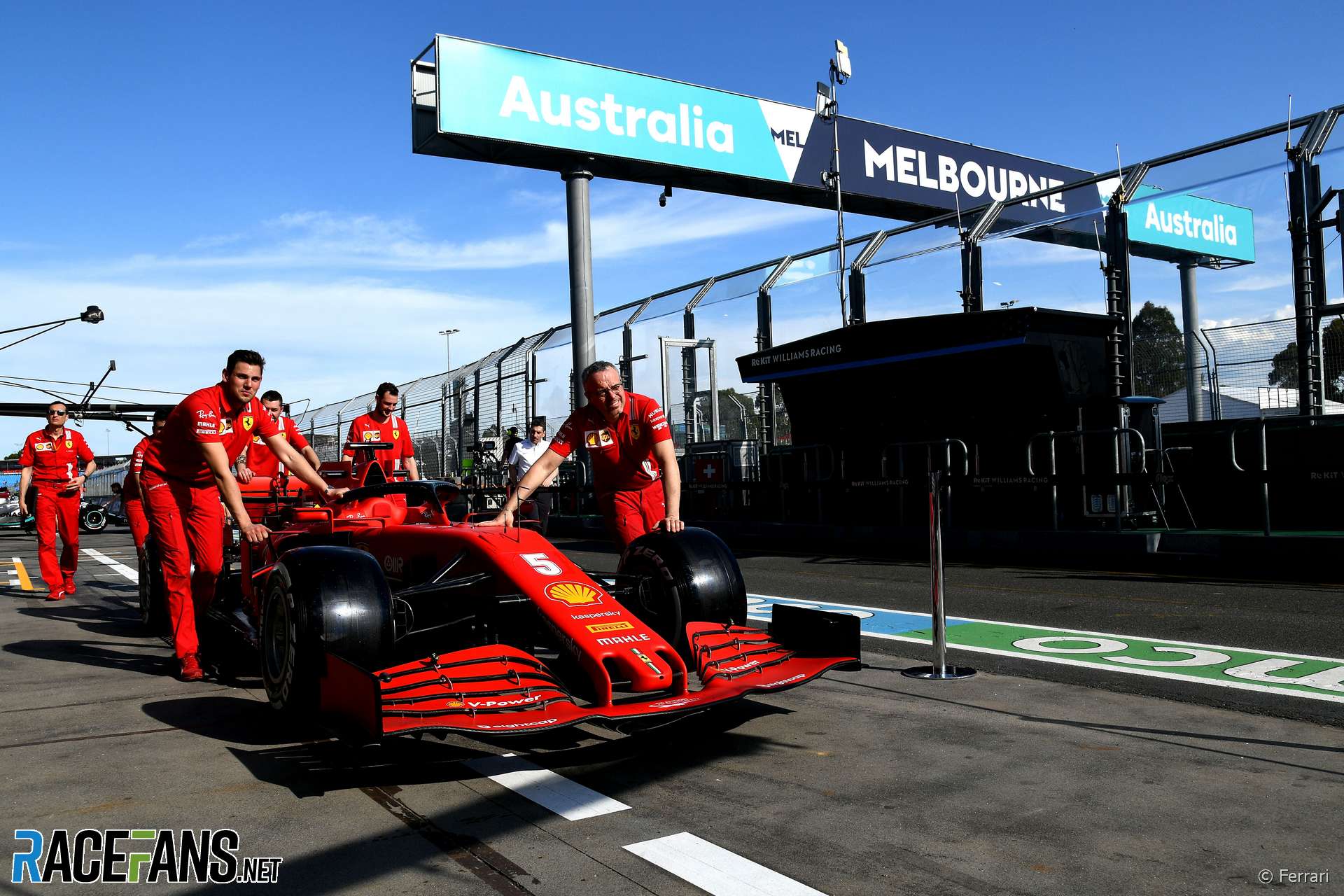

Jamie B
20th May 2020, 12:52
Good article. I would just like to say, however
Surely the decision whether Renault remains in F1 is down to people at the top of the business, who are not actively involved in the F1 team. And even then, if Renault wants to withdraw, they might sell the team (maybe even for £1 as Honda did in 2008) rather than shutting it down. Same goes for Mercedes.
Jere (@jerejj)
20th May 2020, 13:49
@Jamie B But if there wouldn’t be any willing buyers, they’d just have to shut down completely.
Jamie B
20th May 2020, 15:21
Sure, but it’s not unlikely somebody would be willing to take it on, especially as there will be a cost cap by then. Even in 2008/09/10 there was a buyer for all the departing car manufacturer teams (including Toyota, but at that point there was already 13 other teams (the maximum allowed), with USF1 failing before the 2010 season started).
Panthera are still hoping to make it onto the 2022 grid. Buying an existing team might be preferable to starting a new team from scratch, although if they were to join from scratch with Renault remaining that would of course be better
KaIIe (@kaiie)
20th May 2020, 13:06
Thanks Dieter, another great article. If (or rather how) the sport manages to survive this crisis is interesting, and I can’t wait to see how everything will work and look in a few year’s time.
bernasaurus (@bernasaurus)
20th May 2020, 13:25
There is the possibility that F1 might be a better product at the end of all this. Less dependence on those ‘at the top’ in corporate structures (i’m sure they’re not to blame either, we’d probably make the same decisions they did / will).
I know we don’t want a ‘spec series’, what get us excited is seeing things like ‘DAS’, EBD’s and whatever the next thing around the corner is.
It’s a trade off of expense against innovation, I think we’d love a world where we could see a Racing Point / Aston Martin or any other team could jump up the grid with something other than aerodynamics.
I’m not sure what we want, it’s just a cheaper version of now. Where basically there’s 6 seats, and then the rest.
Jere (@jerejj)
20th May 2020, 13:54
Out of the 22 circuits from the original 2020 race calendar, the number of those to which the teams don’t bring their motorhomes is 13 to be precise, but only off by one.
More importantly, an interesting reading overall and insightful. Interesting what the future for F1 might hold following everything that’s happened over these last two+ months and what could still happen later this year.
Asanator (@asanator)
20th May 2020, 18:28
If you want to ensure that all races only include the one mandatory pitstop and watch racing with no strategy involved, sure make the pitstops take longer.
anon
20th May 2020, 23:12
@asanator it also strikes me that it’s a false economy as well, as it’s been pointed out in the past that the people who are in the pit crew are mechanics or other members of staff who have a secondary role as a pit crew worker.
If that crew is made up from the same mechanics who need to be there to work on the cars, they’re still going to be there even if they aren’t servicing the car during a pit stop. There really isn’t a big saving to be made there – at most, you might save a small amount on training and equipment costs if you reduce the number of people working on the car, but that’s negligible.
You can see that effect in the World Endurance Championship, where the number of people who can work on the car in the fast lane is limited, but the number of mechanics that can work on the car in the garage is unlimited. The WEC found that it had a fairly negligible impact on costs – you’re still paying for that mechanic irrespective of whether he’s also changing a tyre or simply working on the car when it’s in the garage: in fact, it is worth noting that the ACO’s main reason wasn’t cost saving, but safety reasons instead (by arguing that having fewer people working in the fast lane reduced the risk of people being injured).
Equally, whilst the motorhomes of the teams is often used as a target, the teams have indicated that they would likely face increased service charges from the circuits – as, knowing those teams have no other option, some circuits have a reputation for charging inflated prices for equipment and paddock space (the Yeongam circuit in South Korea was one that was often heavily criticised for that practise).
If the teams then rented out space from the circuits or hired temporary facilities from a local supplier, how much does that then cost and how does that compare with the operational costs of those motorhomes? You will be saving less than the headline cost of $8-10 million for running those motorhomes, because you are likely to have additional costs elsewhere – it’s what those costs balance out to be which is the more interesting part, and potentially a much smaller saving than is sometimes suggested.
Alianora La Canta (@alianora-la-canta)
20th May 2020, 23:13
@asanator That can be resolved by having more difference between compounds.
HK (@me4me)
20th May 2020, 18:50
Great read, very interesting indeed.
The sole point I disagree with is the suggestion to limit the number of people doing the pit stops. I think the world’s quickest pit stops are a great piece of advertising for Formula 1. It shouldn’t be disregarded for what is ultimately likely a small saving. I remember in university, several courses mentioned Formula 1 and it’s amazing pit stops, emphasizing the teamwork, readiness and efficiency of the work performed.
Another argument for super fast pitstops is that if you’d add say 5-10 seconds to it, it would further discourage teams from pitting. It has been argued before; circuits with shorter pit lanes tend to enable more aggressive and exciting strategies. Going from a 20 second hit, to a 30 second one would surely create even more one-stop races.
Dieter Rencken (@dieterrencken)
21st May 2020, 12:48
Simple – use degradable tyres and impose one stop minimum
HK (@me4me)
21st May 2020, 14:33
We already have one stop minimum, but if you ment two then why bother with degradable tyres. We’ve been there, and I don’t think Pirelli, the drivers and part of the fanbase liked it. But yes, a two stop minimum. That I could stand behind. But keep the pit stop as-is.
DB-C90 (@dbradock)
21st May 2020, 3:05
Great article as always. Describes the challenges that many many businesses will be facing in the next 12 months or so, although in some ways F1 is unique as there’s two separate groups that can quite often have opposing views on how things should be done for the benefit of their bottom line.
One thing that I think we can be certain of is that Liberty will most likely be much more heavily focussed on their bottom line that trying to ensure that teams survive unless doing that actually benefits their profits.
My only other concern is whether or not some of their more radical “ideas” suddenly get thrust upon us because they see things like shorter races, reverse grids and the like being an easy path to generating more and faster short term profits. Historically, I’ve found that actions to pursue short term returns often destroys the longevity of a business.
Jose Lopes da Silva
21st May 2020, 9:40
Red Bull (Verstappen, Albon)
Ferrari (Leclerc, Sainz)
Aston Martin (Hamilton, Stroll)
McLaren (Ricciardo, Norris)
ART (Ocon, Lundgaard)
Alfa Romeo (Raikkonen, Giovinazzi)
Alonso Campos Racing (Alonso, Palou)
Alpha Tauri (Gasly, Sette Câmara)
Panthera (Bottas, Zhou)
Haas (Magnussen, de Vries)
Williams (Russell, Latifi)
Prema (Schumacher, Shwartzmann)
Rot Stier (Vips, Tsunoda)
Jay Menon (@jaymenon10)
22nd May 2020, 1:10
How much does the Mercedes parent company inject into its F1 operation? If I’m not mistaken, based on @dieterrencken ‘s previous analysis, it was not what I would call a significant amount. Due to their success in recent years, and engine operations, I got the feeling that the business is largely self sustaining. The funds that Diamler AG does inject, are “marketing” costs, which I believe they have reaped massive rewards from. Once again, there was article in on here before that quote a Mercedes executive (or perhaps it was Wolff himself) saying that the cash Mercedes invested in F1 was worth 10 fold (or the like) in real advertising exposure. Perhaps Mr New CEO man see a more effective marketing campaign?
In the case of Honda, their F1 operation was always meant to be a training ground for their engineers, not so much a marketing tool. They’ve always seen F1 as the pinnacle of engineering in motoring, what better placed for the high achieving engineers to further hone the skills which can be deployed in other parts of their business? Electric, Hydrogen or whatever. After years of investment, pain, tears and outright embarrassment, they’re finally winning races now, why quit after all that? …but money does talk though..so..
Out of all this Renault would seem the most precarious, but perhaps Cyril knows something we dont.